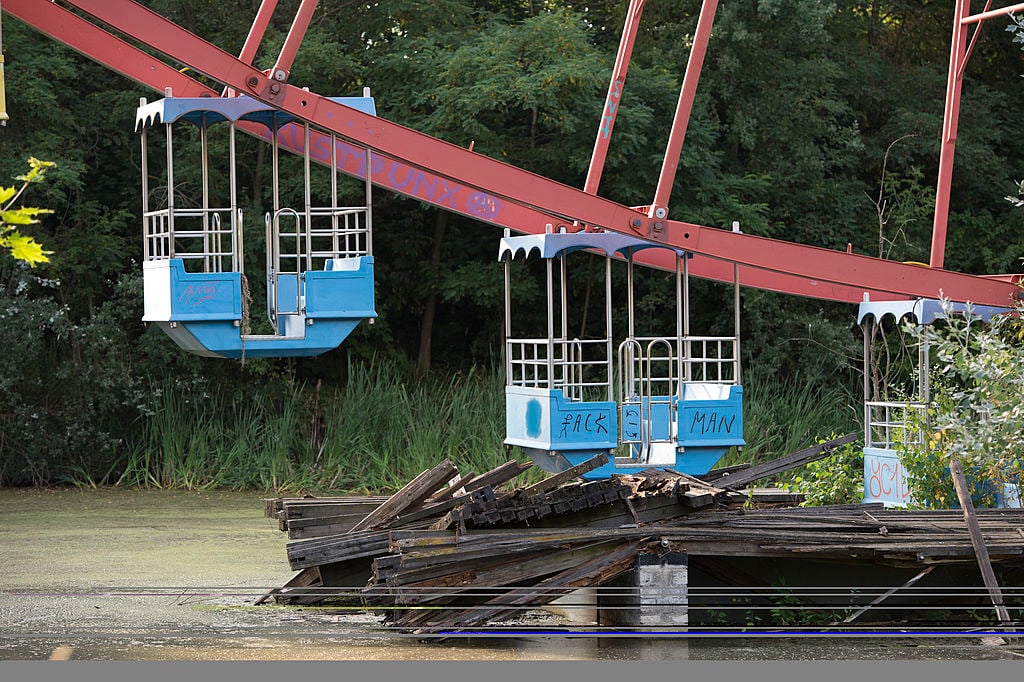
Major work has begun on transforming a long-abandoned East German theme park in Berlin into a cultural site with art galleries and spaces for artists’ residencies in the historic 19th-century Eierhäuschen, a central point of the park.
Some €45 million has been raised for the project, which was first proposed in 2014 after the city, through the government-owned company Grün Berlin, took over the park’s management.
The former Spreepark, as the theme park is known, spans 56 riverside acres that are currently fenced off as old rides and amusement sites sit in various states of disrepair.
Its largest landmark is a 150-foot-tall Ferris wheel that has been non-functional for decades. No longer poking its rim from the treetops of the neighborhood, the historic piece of East German architecture is being dismantled and renovated so it can be reimagined.
View of the pirate ship and a swan boat in the former Spreepark amusement park. Photo: John MacDougall/AFP via Getty Images.
Each piece, including its 40 gondolas, will be examined to evaluate what can be included in its reconstruction.
Christoph Schmidt, the managing director of Grün Berlin, told the Berliner Morgenpost that the aim is to “artistically reinterpret the Ferris wheel in line with the overall concept of the Spreepark as a park for art, culture, and nature.”
Organizers of the project have put out an open call for the new Ferris wheel, and teams of artists and engineers from across the European Union can apply with proposals. The park is currently scheduled to open gradually beginning in 2022, with the Ferris wheel to be operational by 2024. Organizers hope the park will be mostly complete by 2026.
Founded in 1969, the theme park was a major tourist site in the German Democratic Republic. The Ferris wheel was installed to replace a smaller one in 1989 to mark the 40th anniversary of the GDR. The Berlin wall fell shortly thereafter, and from 1991 to 2002, the park was privately owned and operated before it went bankrupt.